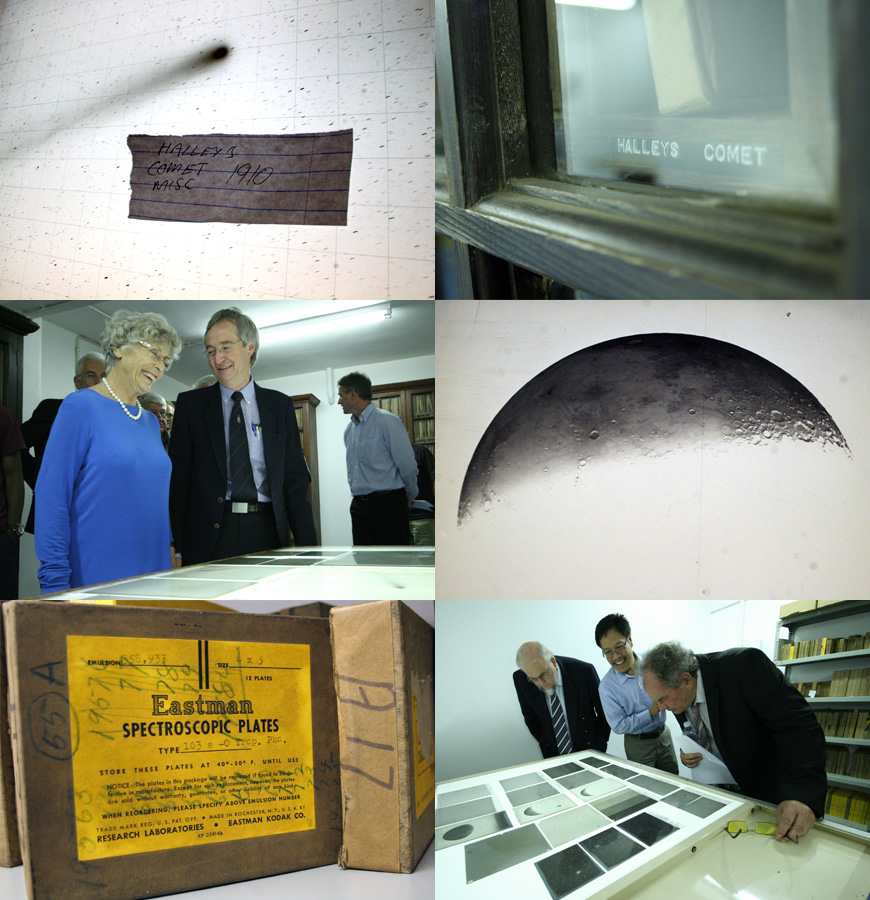Halley’s Comet close brush with Earth now at Wits
- Wits University
The Astronomical Plate Archive of the South African Sky is a unique collection of astronomy wonders.
Saved from imminent destruction years ago, an invaluable and unique astronomical plate collection has found a home at Wits University.
The new Astronomical Plate Archive of the South African Sky is now based in the School of Physics and is the result of a joint effort by the Wits Centre for Astrophysics and the Astronomical Society of Southern Africa (ASSA) to find a permanent home for dozens of historically important photographic plates.
These glass plates are examples of old photographic techniques and how telescopes were used some 100 years ago. There is a 1910 plate depicting Halley’s Comet with its magnificent tale as it brushes especially close past Earth. As well as extraordinary detailed photographic plates from 1922 of one of the phases of the Moon in the southern skies – a beautiful image of the craters.
How these plates were saved
The CSIR (Council for Scientific and Industrial Research) was the custodian of the plates but some years ago, realising that the plates could be destroyed, Alec Jamieson from the Astronomical Society of Southern Africa Johannesburg Centre (ASSAJhb) collected the plates and arranged temporary storage.
Efforts to set up a suitable storage facility at the Johannesburg Observatory was problematic and the longer the plates remained on site the less likely they were to survive.
ASSAJhb subsequently brought this to the attention of Professors John Carter (Head of School) and Sergio Colafrancesco, DST-NRF SKA Chair of Radio Astronomy, in the School of Physics.

Historical treasure of astronomy for South Africa
Colafrancesco, together with Jamieson and Jerome Jooste (Chairman of the ASSAJhb), immediately realised that the plates are part of the unique Astronomical Plate Archive started in 1909 by Robert Innes, the director of the then Transvaal Observatory in Johannesburg, and that it needed to be preserved for historical, cultural and research purposes.
“This is a very important historical record of photographic plates of the southern skies,” Colafrancesco said at the inauguration of the Astronomical Plate Archive at Wits.
“I am impressed by the astronomical and photographical quality of these glass plates. High-definition digitisation techniques will now allow comparisons to be made with the historical observations of the southern African skies and the present plethora of multi-frequency data in the search for long time-scale transient phenomena,” he said.
Former chairman of the ASSA, Brian Fraser, also presented an overview of astronomical observatories in South Africa, detailing the major observatories, both professional and amateur, dating back over the past 150 years: From the Royal Observatory at the Cape, the Yale Observatory on the Wits campus, major observatories in Bloemfontein and Johannesburg to the South African Astronomical Observatory (SAAO) at Sutherland and the magnificent Southern African Large Telescope (SALT).
A generous donation by Wits alumna and former head of Architecture at the old Wits Technikon, Hillary Veale, allowed for the Archive to be established and will contribute to the unique astronomical research potential in the southern hemisphere.
